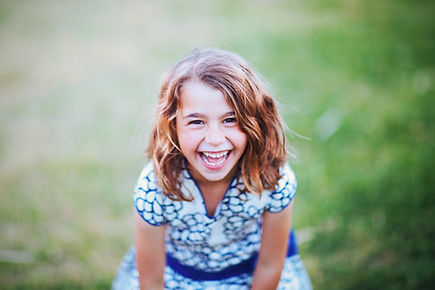

Outside Safety and Creative Play for Autistic Children
The CDC found that nearly one in 54 American children is on the autism spectrum. These children have problems interacting socially, struggle with nonverbal forms of communication, and often engage in repetitive behavior. As such, it can be difficult to form lasting friendships with non-autistic children because they do not process or respond to external stimuli in the same way. Even so, autistic children tend to display unique skills and strengths that set them apart from other children.
However, like non-autistic children, they also need time to play and develop physically and mentally in a safe and nurturing environment like the backyard. Play helps children develop motor skills, language skills, cognitive and problem-solving abilities, and social skills. Playing outside is important because it exposes kids to vitamin D via sunlight, improves vision, and promotes imagination. Consider this advice from CityArts Cooperative.
Outdoor Play
It can be hard for parents to interact with autistic children in an outdoor play environment. They may have trouble keeping their child interested in certain play settings. And autistic children may spend significant time engaging in repetitive activities that make no sense to parents or other kids, which tends to alienate them from potential playmates.
As with safety concerns inside the house, such as the home office where wandering hands can easily pick up potentially harmful objects like thumbtacks or scissors, there are risks outside as well. Parents worry about their children dashing away from their yard, which could lead to the child becoming lost. Although certain products, such as the GPS Invisabelt, can help parents keep track of their kids should they wander away from the yard, the stress of the child possibly going missing often prompts parents and guardians to keep children inside the house at all times.
Nonetheless, outside play is crucial to the health and well-being of autistic children, which is why it’s important to provide a safe, accessible and functional backyard. A well-thought-out and imaginative outdoor play space can be therapeutic and stress-relieving for your child. Even more importantly for an autistic child, the backyard is an ideal space for sensory integration activities that are very beneficial because it gives them an opportunity to interact and learn about their environment and the world outside through touch.
Doing art projects in the great outdoors is a wonderful way to engage your autisitc child. Tinybeans notes that sensory art projects like plastic baggy painting, latex-gloved finger painting, and styrofoam sculptures are easy projects that keep kids occupied while having fun. They can savor the space made especially for them, and for you it makes for easy cleanup afterward.
As a bonus, having a yard designed with children’s play in mind could provide you a hefty return on your investment should you put your home on the market in the future. Especially if you’re in an area that lures in families with young kids, a backyard with a safe and inviting atmosphere for children could reel in potential buyers and give your home a competitive edge. To stay on top of what your home’s increased value is, keep an ongoing list of the outdoor improvements you’ve made along with receipts for any purchases you make.
The following are suggested outdoor activities that can help autistic children benefit from sensory integration.
Sandbox
Touch is an important sensory experience for kids on the autism spectrum. It’s how they begin to relate to the world and make connections that help them learn. As Autism Parenting Magazine notes, sand is an especially fascinating play medium for autistic kids because they can do so much with it, from creating castles and building roads and rivers to just letting it run through their fingers and toes. A sandbox made of smooth wood or vinyl planks can be a safe and educational haven for your child.
Bubble Blowing
Bubbles are a fun outdoor activity for kids of all ages. Combine soap, food coloring, and water and find a strainer or any kitchen tool with holes in it to create bubbles of varying shapes and colors that kids can put to flight just by waving their arms.
Watch the Birdies
Autistic children often find watching animals in their natural habitats fascinating. Another fun outdoor activity involves creating bird-feeder bins with your child’s help and letting them experience the different sizes and textures of birdseed. Spend some time watching together as your backyard becomes a haven for birds of all kinds. See how many species you can recognize and keep a log. See how many different kinds you can identify by the end of the summer.
Backyard Gardening
Digging in the dirt and planting and watering flowers and vegetables is another fun and educational activity for your child. Make sure they have their own gardening tools, including a small plastic shovel, a bucket or watering can, and a reliable pair of gardening gloves.
Autistic children require ample play time to develop cognitive and motor skills and allow their imaginations to soar. An engaging backyard play environment can provide your child with an important developmental and educational experience -- one you can enjoy together.
Photo courtesy of Pixabay.com
CityArts Cooperative is a space for creatives of all types, uniting Bay County’s artists, photographers, dancers, videographers, and more, with programs and services to support the performing arts community. Connect with us today to find out more! 850.769.0608